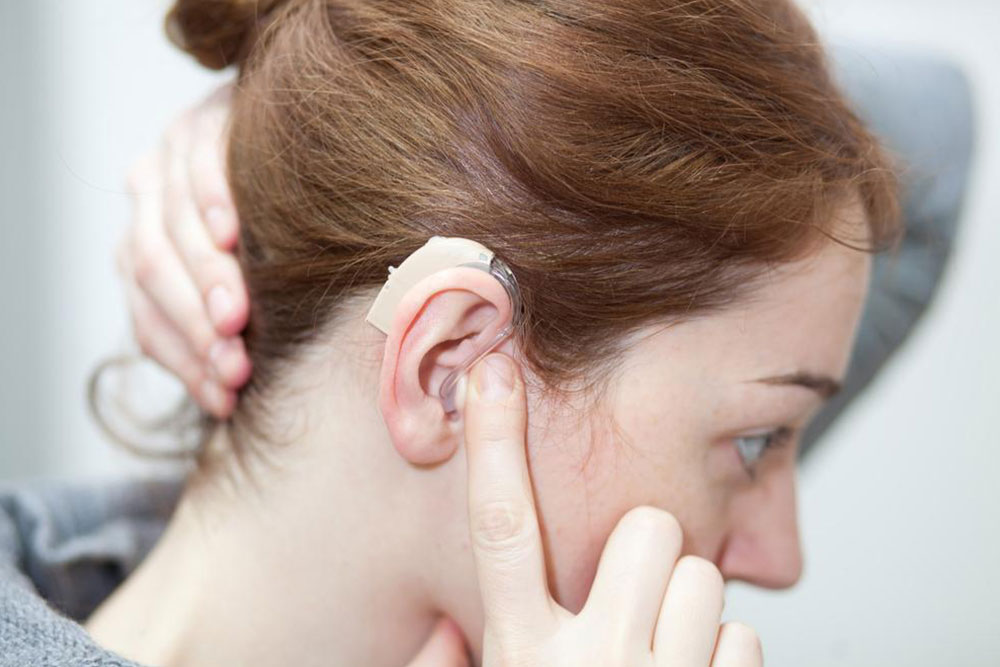Comprehensive Guide to Types and Causes of Hearing Impairment
This comprehensive article explores the three main types of hearing impairment: conductive, sensorineural, and mixed hearing loss. It discusses their causes, symptoms, and treatment options, emphasizing the importance of early detection and intervention. With advances in medical technology, many forms of hearing loss can be effectively managed, improving patients' quality of life. The article aims to educate readers on ear health, preventive measures, and available treatments, promoting better hearing and communication for all.

Comprehensive Guide to Types and Causes of Hearing Impairment
Hearing impairment is a condition that impacts millions worldwide, ranging from mild to profound loss of hearing ability. It can affect individuals across all age groups—from newborns to seniors—and may arise due to various factors. The causes are diverse, including viral infections, age-related degeneration, nerve damage, trauma, exposure to loud noise, and genetic predisposition. Recognizing the different types and their underlying causes is essential for timely diagnosis and effective treatment options. In this article, we explore in depth the primary classifications of hearing impairment, their mechanisms, and common causes.
Types of Hearing Impairment
Hearing loss is generally categorized into three main types: conductive hearing loss, sensorineural hearing loss, and mixed hearing loss. Each type has distinct causes, mechanisms, and treatment pathways. Understanding these differences enables patients and healthcare providers to tailor interventions appropriately, ensuring better outcomes and improved quality of life.
Conductive Hearing Loss: Causes and Characteristics
Conductive hearing loss occurs when there is a dysfunction in the outer or middle ear that prevents sound waves from reaching the inner ear effectively. This type of loss can be temporary or permanent depending on the cause. It is among the most treatable forms of hearing impairment, often reversible with medical intervention.
The primary areas affected include the external auditory canal, eardrum, and ossicles—the tiny bones in the middle ear called malleus, incus, and stapes. Any abnormality or blockage in these parts can impair sound conduction.
Various factors contribute to conductive hearing loss. Structural anomalies such as congenital malformations can impede hearing from birth. Acquired issues like otitis media, commonly known as middle ear infections, often cause fluid buildup that dampens sound transmission. Ear infections can stem from cold or allergy-related inflammation, leading to temporary hearing impairment.
Other causes include Eustachian tube dysfunction, where the tube fails to equalize ear pressure, leading to discomfort and hearing issues; perforations or tears in the eardrum, often resulting from trauma or loud noises; benign tumors and growths in the ear canal can block sound pathways. Impacted earwax or foreign objects lodged in the ear canal are frequent culprits, especially in children, and can be readily remedied through medical procedures such as ear irrigation or removal.
Additionally, certain diseases like otosclerosis can cause abnormal bone growth, particularly affecting the stapes bone, leading to conductive hearing loss. In some cases, these issues are surgically correctable, with procedures like tympanoplasty or ossiculoplasty restoring hearing. Overall, understanding the cause of conductive loss is crucial to determine the appropriate treatment plan.
Sensorineural Hearing Loss (SNHL): Causes and Details
Sensorineural hearing loss is caused by damage to the inner ear structures or the auditory nerve pathways that transmit signals to the brain. It is often permanent because the damage involves neural tissues. This form of hearing impairment tends to affect the clarity and volume of sound perceived, making it more challenging to understand speech, especially in noisy environments.
Several factors contribute to SNHL. Viral infections such as measles, mumps, or herpes can damage inner ear cells. Head injuries, particularly those involving the temporal bone or brain, can disrupt nerve functions. Long-term exposure to loud noise—like concerts, machinery, or firearms—gradually damages the sensitive hair cells within the cochlea, leading to hearing loss.
Age-related degeneration, known as presbycusis, gradually diminishes hearing ability, especially after the age of 60. Genetic factors also play a significant role; some individuals inherit susceptibilities that predispose them to early or progressive hearing loss. Medical conditions such as Meniere’s disease, characterized by fluid buildup in the inner ear, also cause sensorineural deficits.
Furthermore, ototoxic medications—drugs used in treatments for cancer (like cisplatin), antibiotics, or loop diuretics—can damage inner ear cells, resulting in hearing impairment. Inner ear malformations or autoimmune conditions like otosclerosis can exacerbate the damage, leading to progressive loss if untreated. Hearing aids or cochlear implants are common interventions, especially for severe cases, improving quality of life and communication ability.
Mixed Hearing Loss: The Intersection of Conductive and Sensorineural Causes
Some individuals suffer from a combination of both conductive and sensorineural hearing loss, a condition known as mixed hearing impairment. This duality implies that both the outer/middle ear and the inner ear or nerve are affected simultaneously, complicating diagnosis and treatment.
Trauma, such as severe head injuries, can damage multiple parts of the auditory system, leading to mixed hearing impairment. Chronic exposure to loud noise can also contribute, particularly when combined with ear infections or other ear pathologies. Older adults may experience this form due to age-related degeneration alongside chronic middle ear issues.
Addressing mixed hearing loss requires a comprehensive approach. Treatments may include surgical correction of conductive components—like repairing the eardrum or removing growths—paired with hearing aids or cochlear implants to manage sensorineural deficits. Early detection and intervention are vital to prevent further deterioration and improve auditory function.
Conclusion and Future Perspectives
Hearing impairment is a complex condition with multiple underlying causes and types. Understanding whether the loss is conductive, sensorineural, or mixed guides effective treatment strategies, improving patient outcomes. Advances in medical technology, such as innovative surgical techniques and high-tech hearing devices, continue to enhance the quality of life for those affected.
Prevention remains a key aspect: protecting ears from loud noise, managing infections promptly, and regular hearing screenings help catch issues early. As research progresses, new therapies and assistive devices are set to provide better solutions for millions worldwide suffering from hearing impairments.
By increasing awareness and understanding of the diverse causes and types of hearing loss, we can foster timely diagnosis and personalized treatment plans, ultimately helping individuals regain better hearing and communication abilities.





